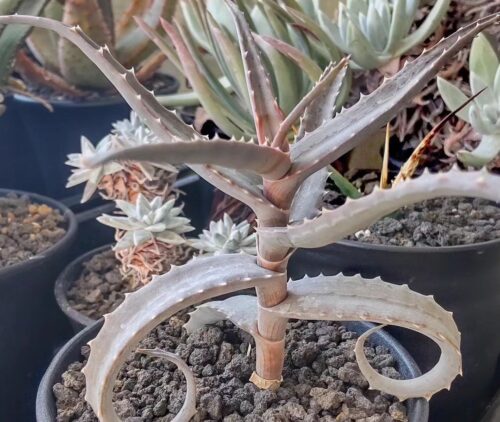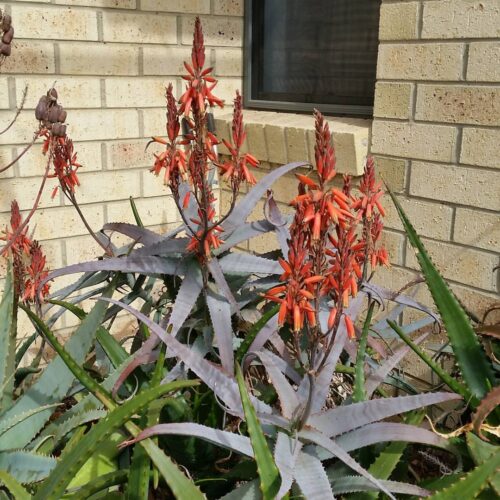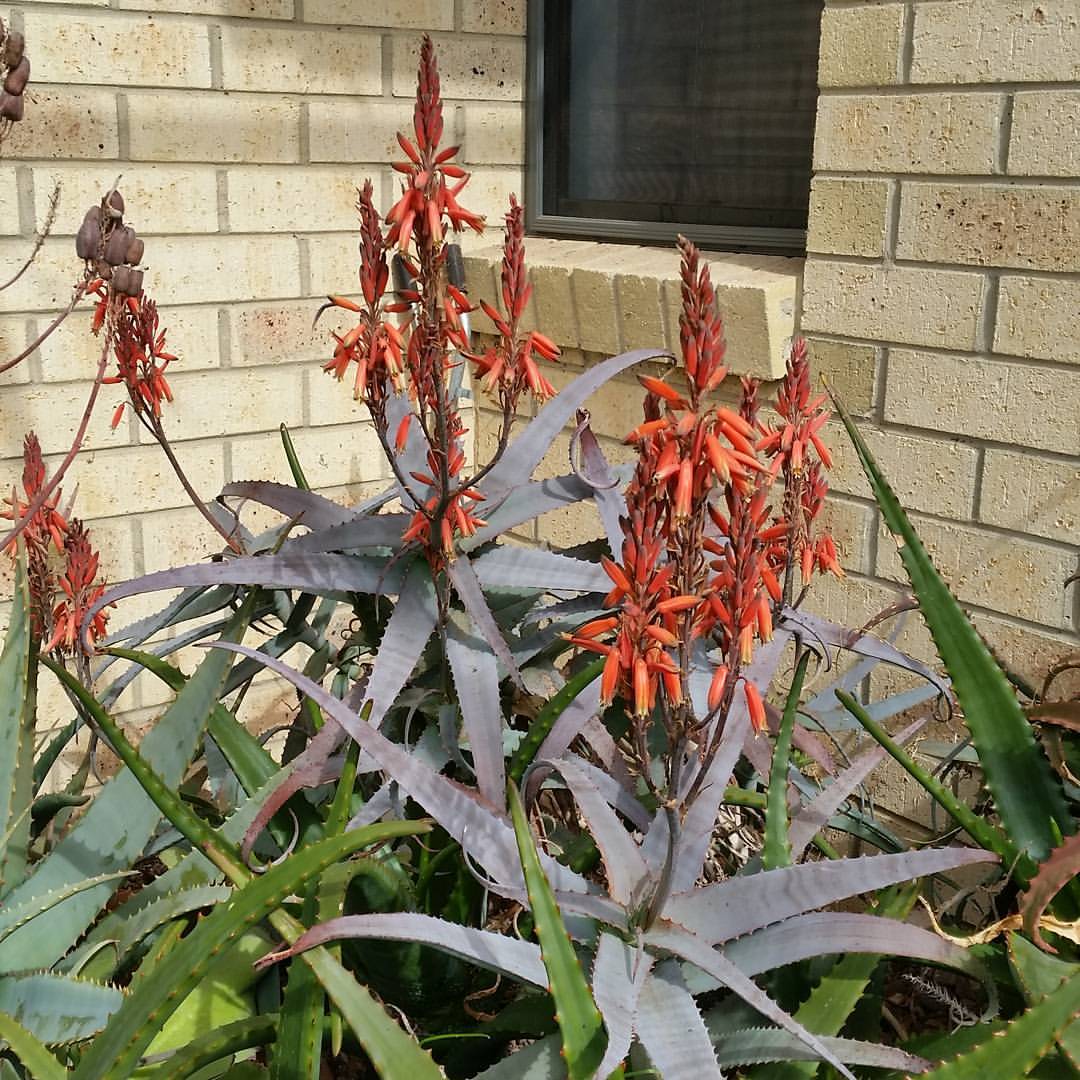Grow Aloe acutissima in your home or garden with the help of the instructions given in this post. You can grow it in pots, too.
Aloe acutissima is a beautiful succulent that grows fast and covers the area for some years; you can grow it in containers as well.
Common Names: Blue Aloe, Blue Spider Aloe
USDA Zone: 9b-11b
Read: Tips to Force Aloe Vera to Bloom
Aloe acutissima Information

Native to Madagascar, specifically in the former provinces of Tuliara and Fianarantsoa. It is found at altitudes ranging from 790 to 3,940 feet (240 to 1,200 m) above sea level.
Aloe acutissima is a bushy succulent plant with lots of branches. The stems of this succulent have clusters of narrow, curved, blue-green leaves with touches of pink, red, and purple.
The stems can stick up, spread out, or lie flat, growing up to 3.3 feet (1 m) long and 1.2 inches (3 cm) thick. The leaves are shaped like spears and have sharp, reddish-brown edges.
In the winter, Aloe acutissima produces tall, spiky branches with dark red buds pressed against the stem. These branches can grow up to 20 inches (50 cm) above the leaves. The open flowers start at the bottom of the cluster. The tube-shaped blooms appear in a dull red-orange color with whitish tips.
Read: Growing a Jade Plant from Cuttings
How to Propagate Aloe acutissima
You can grow Aloe acutissima from stem cuttings in the growing season. Growing this succulent from seeds is also a good option. Sow the seeds in the warm months of the year for the best results.
Read: How to Grow Conophytum Pageae
Ideal Growing Conditions for Aloe acutissima
Location
While growing blue aloe indoors, keep it close to a window that gets ample bright indirect sunlight. Rotate the pot once or twice weekly to ensure uniform exposure of all sides to light. When growing outdoors, provide the plant with light shade, particularly during the hottest periods of the day.
Soil
Use well-draining soil for optimal growth of the plant, as prolonged exposure to excess moisture can lead to root rot. Buy commercial succulent soil or create a well-draining mixture on your own.
Water
This plant requires consistent watering but can endure short periods of drought. Water deeply only when the soil feels completely dry to the touch, and avoid allowing water to accumulate in the rosettes. Reduce watering in the winter months.
Temperature
When temperatures drop below 50 °F (10 °C), it’s advisable to bring this plant indoors. While it can withstand heat quite well, it is not resilient to severe frost. Aloe acutissima thrives in USDA Plant Hardiness Zones 9b to 11b, where the average minimum winter temperatures range from 25 to 50 °F (-3.9 to 10 °C).
Read: String of Stars Plant Care and Growing Guide
Blue Aloe Care

Fertilizer
Aloe acutissima usually doesn’t need fertilizer, but giving it some extra nutrients can help. Just use a water-soluble fertilizer, but dilute it to half-strength, as the label suggests.
Repotting
Repot the plant in spring as required; choose a pot that’s a bit bigger and has holes at the bottom for water to drain out.
Pruning
Prune the plant in spring and trim damaged parts for healthy growth. Always wear gloves to protect your hands from spines and sap.
Pests and Diseases
Your blue aloe can be affected by aphids and mealybugs. Diseases include root rot, aloe rust, and leaf spot. Avoid overwatering to prevent root rot.
Toxicity
Aloe acutissima is safe for humans but slightly to moderately toxic for pets.



